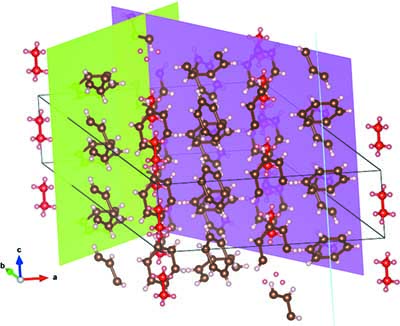Synchrotron used to find structure of a new material that could be found on the surface of Saturn’s moon Titan
 An ANSTO Planetary Materials scientist has used the Australian Synchrotron to identify the structure of a new material that could be crucial in understanding the hydrological cycle on Titan, the largest moon of Saturn, and important in assessing its potential habitability.
An ANSTO Planetary Materials scientist has used the Australian Synchrotron to identify the structure of a new material that could be crucial in understanding the hydrological cycle on Titan, the largest moon of Saturn, and important in assessing its potential habitability.
Helen Maynard-Casely used the Powder Diffraction instrument at the Australian Synchrotron to determine the atomic structure of the new material, a co-crystal between benzene and ethane that forms at 90 Kelvin (-179.2 oC). The experiment was done in situ under cryogenic conditions similar to Titan [Maynard-Casely et al. (2016), IUCrJ, 3, doi: 10.1107/S2052252516002815]. The material, which is formed by molecules of benzene and ethane, had first been identified by her collaborators at the Jet Propulsion Laboratory in the United States using spectroscopy. "They had no way of knowing exactly what they had until the crystalline structure could be found," said Maynard-Casely.
Maynard-Casely went on to say, "Only the diffraction of X-rays, which interact with the electrons of this hydrogenous material, could provide information about the arrangement of atoms in a crystal lattice. The structure of the new material is based on the structure of pure benzene; with its framework stabilized by attraction between hydrogen atoms at the edges of the molecule and the π-bonds in the middle. These sorts of bonds haven’t been found in planetary materials before and the surprise is that this bond is strong and may be as strong as when hydrogen bonds to oxygen at earth temperatures."
The benzene molecules form a framework that surrounds ethane molecules in a highly symmetric geometry. The benzene molecules actually form a framework with a channel, and the ethane molecules occupy this channel.
The research on the co-crystal will continue later this year when Maynard-Casely and colleagues from the Jet Propulsion Laboratory will deuterate the co-crystal and use neutron powder diffraction for further analysis.
This article is a short extract reprinted from a press release published by the Australian Nuclear Science and Technology Organisation

